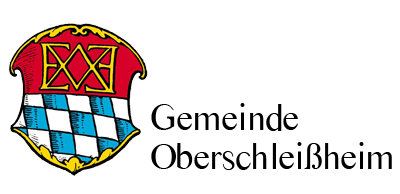On December 10, 1925, the Bavarian State Ministry of the Interior granted the municipality of Oberschleißheim the right to bear a coat of arms. In those days, this right was only granted to municipalities that held the official status of city or market town, or to those of particular historical significance.
The design was carried out by Professor Otto Hupp. Before, in a session of the municipal council on February 12, 1925, the introduction of a coat of arms was decided on. In the same session, the municipal councilors opted for contacting Professor Otto Hupp in regards to the design. This versatile artist, an Oberschleißheim resident since 1882, is one of Germany’s most eminent heraldists.
Description of the coat of arms:
The coat of arms consists of a divided shield. The upper part shows the golden monogram of Elector Max Emanuel on a red background. The lower part contains the Bavarian lozenges.


